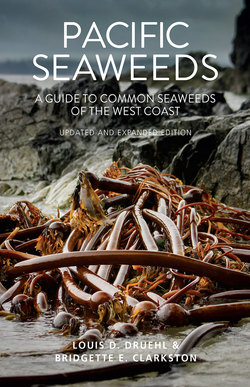Читать книгу Pacific Seaweeds - Louis Druehl - Страница 47
На сайте Литреса книга снята с продажи.
ОглавлениеShore Plants and Seagrasses | 47
Identifying Pacific Seaweeds
that seagrass beds themselves are immune to erosion. Changes in local current patterns or scarring of the beds by vehicles, etc., may destabilize the sediments, bringing about destruction of the grasses and all that depend upon them.
The leaves of Zostera were used as mattress stuffing and house insula-tion in the early 20th century. The loss of eelgrass beds in the North Atlantic Ocean, which was associated with the population explosion of a marine slime mould, brought about the collapse of the Nova Scotia eelgrass mattress stuff-ing industry and severely reduced populations of associated marine animals. Subsequently, synthetic materials have replaced eelgrasses in industrial uses.
Habitat & Distribution
Zostera plants are usually in wave-protected areas, rooted in mud or muddy sand from Alaska to Mexico.
Phyllospadix Surfgrass
Class Monocots Order Alismatales Family Cymodoceaceae
Number of Species
Of the five species of Phyllospadix (Greek=leaf and spike of flowers) world-wide, P. scouleri, P. serrulatus and P. torreyi are found locally.
Phyllospadix scouleri at low tide.
